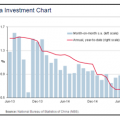A proper war diary is being written at the border between Malaysia and Thailand. It’s not a matter of conflict between nations, but the Malay and Muslim minorities’ rebellion in four Southern Thai provinces. The Buddhist religion was an integral part of the country’s birth and culture; it forms a cornerstone that contributes to the kingdom’s unity. Monks’ saffron-colored tunics are a constant presence in temples, streets, and public ceremonies. Almost all Thai complete a novitiate period, very frequently to acquire their primary literacy. In any case, there is a strong Muslim minority concentrated in territories facing the Gulf of Thailand. About 3 million citizens—slightly less than 5% of the population—are followers of Islam with historical, geographic, cultural, personal, and religious ties with Malaysia. Historical events more than a century ago caused the separation, when Thailand was a powerful kingdom and Malaysia still hadn’t achieved independence and unity among the sultan vessels that compose it.
The presence of minorities in border zones is common and presents acceptable cohabitation. In any case, tensions in Southeast Thailand have reached violent and uncontrollable levels. Since the beginning of the armed conflict in 2004, approximately 6,300 people have perished between the two combatting sides. There are militant Muslims on one side and Thai police and armed forces on the other. Violence has frequently involved regular citizens. An escalation of the number of victims has only been recorded in the last 3 months, among incendiary attacks, explosions, ambushes, and dark retaliations. The last incident involved the wounding of 4 soldiers whose jeep exploded after driving over a landmine.
Muslim political factions—among which the insurgents represent a clear minority—request greater autonomy from Bangkok, the maintenance of religious traditions (therefore limited the Buddhist sphere of influence), and the reprisal of Jawi, the Arabic script used frequently in Southeast Asia, for religious functions. The Thai government considers the combatants “terrorists” and “bandits”, with whom it obviously does not want to open negotiations. It denounces the indiscriminant violence, as well as their ties with more extreme jihadist groups. The Muslim population, on the other hand, laments forced assimilation, human rights violations, and the brutality of security forces. In addition, they condemn the province’s economic underdevelopment, where income is lower than the national average and the government does not intervene with the same resources destined for poorer areas in the northeast.
In reality, this tormented region owes its destiny to at least two situations it can’t control. The first is the evolution of internal Thai politics: the military junta has not yet approved the new constitution, postponing the referendum and protracting its permanence in power. In the midst of this stalemate, negotiations with the rebellious provinces have been blocked while more conservative and nationalistic forces gain strength. In the past, the controversial Premier Thaksin strengthened his control over turbulent regions to ingratiate the clergy and more Thai-centric sectors. The recent terror attack in Bangkok—as yet unclaimed—has fueled fear and tensions in the country. Finally, the government conceded certain Uighur militants from the Chinese Turkic and Muslim province of Xinjiang, to Beijing, accused of taking part in separatist groups. Obviously, the delivery alarmed humanitarian organization and exacerbated tempers in Southern Thai provinces. This is probably one of the motivations underlying the resistance’s behavioral change. If prior claims regarded language, territory, and education, they are now openly political and religious. The conflict has become violent, and a tragic approach could have been avoided with more concrete negotiation activities.


















